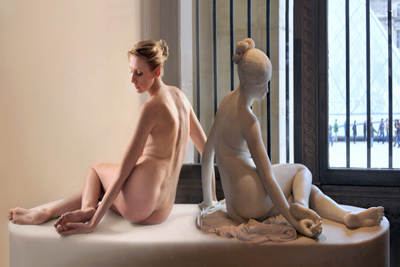
Created by the master Italian sculptor Lorenzo Bartolini (1777-1850) between 1846 and 1851, the first version of his Nymph with a scorpion was exhibited in Paris at the Salon of 1845 and was hugely acclaimed.
The marble used by the artist for the Nymph is creamy white and in that piece of hard and cold marble, he perfectly brought to life the sense of the softness, warmth and silkiness of her young skin. The face of the nude Nymph bears a light grimace of pain from the stings of the scorpion and though the expression is not overly pained, the way in which she pulls back and holds her big toe, probably in an attempt to check her wound, is strikingly real.


Lorenzo Bartolini, perhaps one of the most original sculptors of the first half of the 19th century, spent his youthful years in Paris and became famed for his portrait statues of Napoleon Bonaparte. However, during the later part of his life, while settled in Florence, he departed from his earlier neoclassical principles and sought a more precise representation of nature, in a style which is strongly evident in his Nymph with a scorpion, one of his iconic works.
In the sculpture, he consciously broke the harmony of the classical image, allowing small distortions in the shoulders and arms of the Nymph. With his Nymph, Lorenzo Bartolini infused his restrained classicism with a tint of naturalism, which is particularly expressed in the slight grimace and contorted face of the girl, evoked by the sting of the scorpion.

Nymph with a Scorpion has links in pose with the ancient sculpture Girl Playing Astragaloi (Knucklebones) from around 130-150 AD, now on display at the Altes Museum in Berlin, Germany.
Nevertheless, the prime versions of the Nymph with a scorpion are now on display in the Musée du Louvre, Paris and in the Hermitage Museum, St Petersburg.
